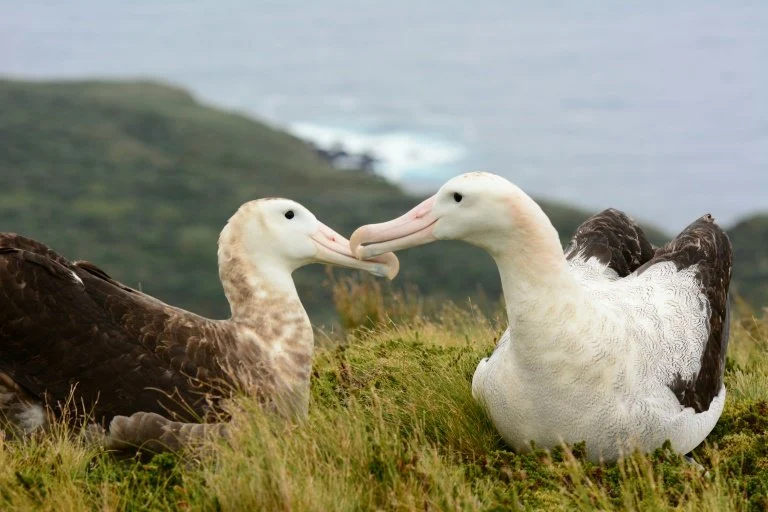 |
| Tristan albatross Diomedea dabbenena |
A very nice, even if worrying, example of evolution in progress was illustrated in a report by the RSPB on one of their programmes to protect the seabird population on remote South Atlantic Gough Island. The giant descendants of the house mice that were introduced accidentally to the island in the 19th century, have become predatory on the estimated more than eight million seabirds of twenty-three different species that nest there.
Gough Island is part of the UK Overseas Territory of Tristan da Cunha, and is the nest site of the critically endangered Tristan albatross, Diomedea dabbenena.
The mice have evolved in the harsh conditions on the island and are now 2-3 times as big as an ordinary house mouse. They have also become carnivorous, biting chunks of flesh out of the chicks of nesting birds. Tristan albatross chicks weigh up to 10 Kg. but the wounds inflicted by the mice can kill the chicks if they become infected.
There are only two and maybe three processes that could have caused this change of body size and habit in these mice over the past 200 years or so. The first and least likely is a founder effect where many of the mice, although otherwise normal size, carried genes for a much bigger body size that have expressed in their descendants.
The second is simple genetic drift where genes for large size bodies were already present in the founder population and simply increased in the isolated population by random drift. However, a normal population of house mice does not contain individual mice two or three times the size of normal mice. This objection also applies to the founder effect explanation.
 |
| Gough Island |
Gradually, but rapidly on the normal scale of evolutionary change, the Gough Island house mice have changed to be better adapted to their new environment and to better exploit the available resources.
Of course, an intelligent design advocate would have to argue that the intelligent designer redesigned these housemice slowly over time so that they could threaten the Tristan albatross and other seabirds on this remote island with extermination, because this was the most intelligent way it could think of to exterminate birds.
In an attempt to save the Gough Island seabirds the RSPB is to launch an eradication programme using helicopters to distribute poisoned bait. If you wish to support this or other RSPB conservation projects you can do so with a donation here.


No comments :
Post a Comment
Obscene, threatening or obnoxious messages, preaching, abuse and spam will be removed, as will anything by known Internet trolls and stalkers, by known sock-puppet accounts and anything not connected with the post,
A claim made without evidence can be dismissed without evidence. Remember: your opinion is not an established fact unless corroborated.